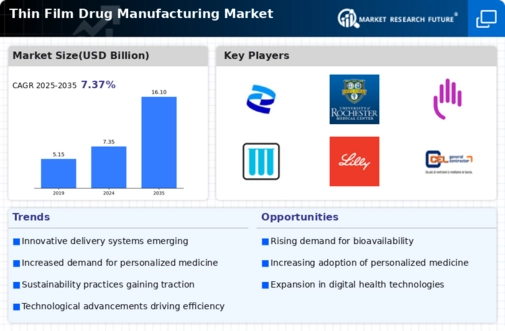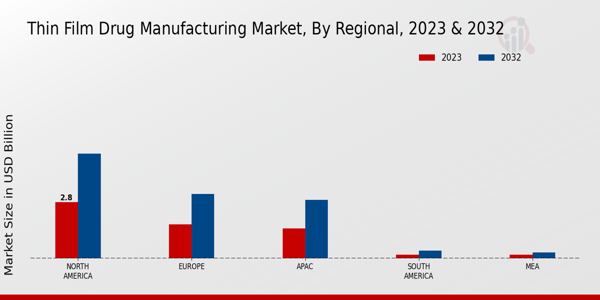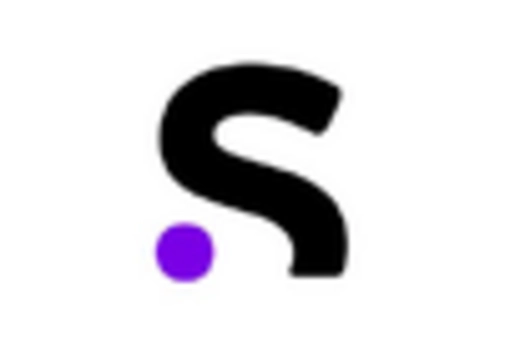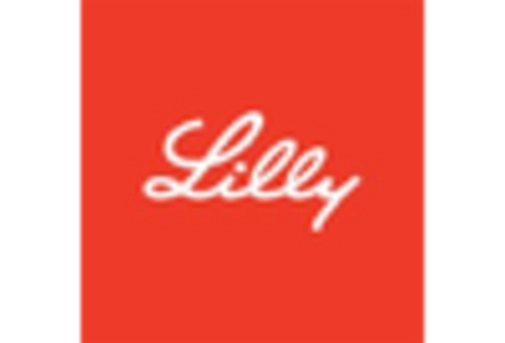Market Growth Projections
The Global Thin Film Drug Manufacturing Market Industry is projected to experience substantial growth, with forecasts indicating an increase from 7.35 USD Billion in 2024 to 16.1 USD Billion by 2035. This growth trajectory is supported by various factors, including technological advancements, rising demand for patient-centric solutions, and increasing prevalence of chronic diseases. The anticipated compound annual growth rate of 7.38% from 2025 to 2035 reflects a robust market environment, driven by innovation and regulatory support. These projections highlight the industry's potential to transform drug delivery systems and improve patient outcomes on a global scale.
Growing Investment in Pharmaceutical R&D
Investment in pharmaceutical research and development is a critical driver for the Global Thin Film Drug Manufacturing Market Industry. Increased funding allows for the exploration of novel drug formulations and delivery mechanisms, particularly in the realm of thin films. Pharmaceutical companies are recognizing the potential of thin film technologies to enhance drug efficacy and patient adherence. This trend is evident in the rising number of collaborations between academia and industry, aimed at developing cutting-edge thin film products. As the market evolves, the projected CAGR of 7.38% from 2025 to 2035 underscores the importance of sustained investment in R&D.
Increasing Prevalence of Chronic Diseases
The Global Thin Film Drug Manufacturing Market Industry is significantly influenced by the rising prevalence of chronic diseases, such as diabetes and cardiovascular disorders. These conditions necessitate effective and convenient drug delivery solutions, which thin films can provide. For example, thin film formulations for anti-diabetic medications allow for rapid absorption and ease of use, thereby improving patient compliance. As healthcare systems worldwide adapt to manage these chronic conditions, the demand for innovative drug delivery methods is expected to escalate, contributing to the market's growth trajectory in the coming years.
Rising Demand for Patient-Centric Drug Delivery
The Global Thin Film Drug Manufacturing Market Industry experiences a notable surge in demand for patient-centric drug delivery systems. These systems, which enhance patient adherence and comfort, are increasingly favored in therapeutic applications. Thin films offer rapid dissolution and absorption, which can significantly improve bioavailability. For instance, the convenience of oral thin films, particularly for pediatric and geriatric populations, aligns with the industry's focus on personalized medicine. As the market evolves, the projected growth from 7.35 USD Billion in 2024 to 16.1 USD Billion by 2035 indicates a robust shift towards these innovative delivery methods.
Technological Advancements in Manufacturing Processes
Technological innovations play a pivotal role in the Global Thin Film Drug Manufacturing Market Industry, driving efficiency and product quality. Advanced manufacturing techniques, such as roll-to-roll processing and solvent casting, enhance the scalability of thin film production. These methods not only reduce production costs but also improve the consistency and performance of drug formulations. The integration of automation and real-time monitoring systems further optimizes the manufacturing process, ensuring compliance with stringent regulatory standards. As a result, the industry is poised for growth, with a compound annual growth rate of 7.38% projected from 2025 to 2035.
Regulatory Support for Innovative Drug Delivery Systems
Regulatory bodies are increasingly supportive of innovative drug delivery systems, which positively impacts the Global Thin Film Drug Manufacturing Market Industry. Initiatives aimed at expediting the approval process for novel formulations encourage manufacturers to invest in research and development. This regulatory environment fosters innovation, allowing companies to bring advanced thin film products to market more swiftly. As a result, the industry is likely to see an influx of new products that meet evolving patient needs. The anticipated growth from 7.35 USD Billion in 2024 to 16.1 USD Billion by 2035 reflects this favorable regulatory landscape.

























Leave a Comment